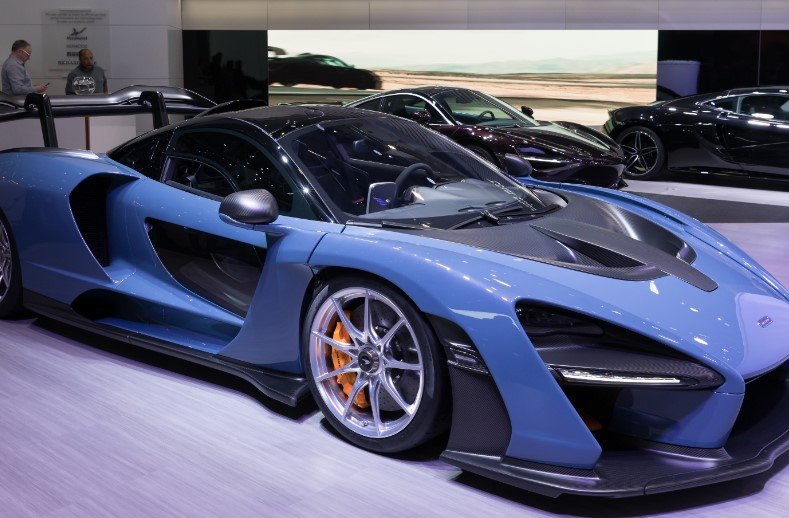Tokyo is buzzing as carmakers roll out cutting-edge technology at the Japan Mobility Show 2025, held from October 30 to November 9 at Tokyo Big Sight. This major event draws over 500 exhibitors, highlighting electric vehicles, robotic aids, and sustainable concepts, all while the industry grapples with fresh US tariffs that threaten exports and profits.
Show Highlights Cutting-Edge Innovations
Automakers are pushing boundaries with new models and prototypes that blend practicality with futuristic design. Toyota leads the pack by focusing on inclusive mobility, showing off self-driving carts for kids and powered chairs for people with disabilities. These tools aim to make daily travel easier for everyone, regardless of age or ability.
Honda steals the show with its president demonstrating a body-controlled robotic chair during his speech. The company also unveils a rocket concept fueled by renewable energy, pointing to broader uses beyond cars. Startups join in, displaying affordable electric vehicles that promise longer ranges without breaking the bank.

Electric vehicles dominate the floor, with many brands revealing battery-powered options that tackle range anxiety and cost issues. For instance, Suzuki announces exhibits including compact cars tailored for urban life, while Yamaha showcases six wild concepts like the Motoroid Lambda and Tricera, mixing motorcycles with advanced tech.
US Tariffs Cast Shadow on Japanese Exports
The United States slaps a 15 percent tariff on Japanese cars after negotiations, down from an initial 25 percent push by President Donald Trump. This move hits hard since America takes about 32 percent of Japan’s auto exports, based on 2024 data. Analysts predict a yearly loss of up to 1.45 trillion yen for giants like Toyota if prices stay put.
Industry leaders voice concerns at the show. Toyota’s president warns of profit dips but pledges no quick price hikes to keep buyers happy. Honda plans to shift some Civic production to US plants to dodge duties, a direct response to the trade squeeze.
These tariffs stem from broader US efforts to boost domestic manufacturing. They follow a July 2025 trade deal that adjusted rates, yet Japanese firms still face higher costs on steel and parts. Economists from groups like Nomura Research note this could shave 3 percent off Japan’s GDP tied to autos.
- Toyota expects a 1.45 trillion yen hit to operating profits in fiscal year 2025/26 due to tariffs.
- Honda shifts Civic hybrid production from Japan to the US to cut tariff costs.
- Overall, Japanese auto stocks dipped sharply after the tariff announcement in March 2025.
Economic Impact on Japan’s Auto Sector
Japan’s auto industry employs over 4.3 million people across thousands of firms, making it a backbone of the economy. The sector ranks third globally, with 10 homegrown makers driving innovation and jobs. Tariffs add pressure amid slowing global demand and rising competition from Chinese EV makers.
Experts say the squeeze could force more production overseas. For example, some firms eye “reverse importing” US-made cars back to Japan to ease trade tensions. This unusual step shows how tariffs reshape supply chains, potentially raising prices for American buyers too.
The show also spotlights sustainability. Many exhibits feature eco-friendly tech, like hydrogen-powered vehicles and recycled materials, as Japan aims for carbon neutrality by 2050. These efforts gain urgency with tariffs pushing costs up and exports down.
Future Outlook for Mobility and Trade
Looking ahead, the Japan Mobility Show signals a shift toward diverse mobility solutions beyond traditional cars. Concepts like flying vehicles and autonomous pods hint at urban transport revolutions, with electric and hybrid tech at the core.
Trade tensions may linger, but optimism persists. Leaders like Honda’s Toshihiro Mibe stress adaptation through innovation. As the event wraps on November 9, attendees leave inspired by tech demos, yet mindful of economic hurdles.
| Company | Key Exhibit | Tariff Response |
|---|---|---|
| Toyota | Inclusive mobility prototypes, such as walking chairs | No rapid price increases; focus on market conditions |
| Honda | Robotic chair and sustainable rocket | Shifting Civic production to US factories |
| Suzuki | Urban compact cars | Exploring new export strategies |
| Yamaha | Futuristic motorcycles like Tricera | Emphasizing concept innovations amid trade woes |
Global Reactions and Industry Shifts
Social media buzzes with excitement over the show’s wild EVs, from Honda’s tiny models to luxury rivals. Posts highlight how tariffs boost US jobs but hurt Japanese workers, sparking debates on fair trade.
In response, some firms ramp up local production. Toyota halts certain US lines to supply Canada directly from Japan, dodging some duties. This mirrors broader shifts, like EV pledges cooling as makers balance tech hype with real-world costs.
The event ties into recent trends, such as the 2025 US-Japan trade deal that softened tariffs but left uncertainties. With electric vehicles projected to make up 30 percent of global sales by 2030, Japan pushes hard to stay competitive.
What do you think about these innovations and trade challenges? Share your thoughts in the comments and spread the word to keep the conversation going.








